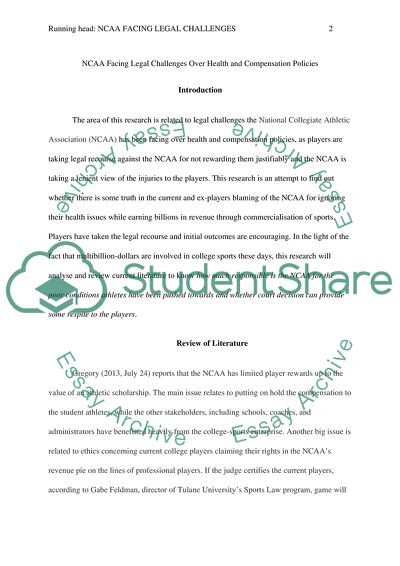Cite this document
(NCAA Facing Legal Challenges Over Health and Compensation Policies Research Paper, n.d.)
NCAA Facing Legal Challenges Over Health and Compensation Policies Research Paper. Retrieved from https://studentshare.org/sports-and-recreation/1818425-compensation-and-benefits
NCAA Facing Legal Challenges Over Health and Compensation Policies Research Paper. Retrieved from https://studentshare.org/sports-and-recreation/1818425-compensation-and-benefits
(NCAA Facing Legal Challenges Over Health and Compensation Policies Research Paper)
NCAA Facing Legal Challenges Over Health and Compensation Policies Research Paper. https://studentshare.org/sports-and-recreation/1818425-compensation-and-benefits.
NCAA Facing Legal Challenges Over Health and Compensation Policies Research Paper. https://studentshare.org/sports-and-recreation/1818425-compensation-and-benefits.
“NCAA Facing Legal Challenges Over Health and Compensation Policies Research Paper”, n.d. https://studentshare.org/sports-and-recreation/1818425-compensation-and-benefits.


